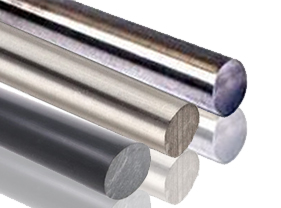 This is the fourth of eight articles in the series Sizing & Selecting the Right Chemical Metering Pump.
This is the fourth of eight articles in the series Sizing & Selecting the Right Chemical Metering Pump.
Every liquid, including water, has some corrosive interaction with pump wetted components, the degree of which depends upon the material that is coming in contact with the chemical. In our world of injecting chemicals, we come across some of the most aggressive chemicals such as Sodium Hypochlorite, Sulfuric Acid, Sodium Hydroxide etc. If careful consideration to selecting the right material is not given, the resulting failure could be expensive at best ad catastrophic and injurious at worst. There have been cases where a chemical eats through the inside of a pump housing without being noticed until it develops pin holes or explodes due to pressure, causing injuries to personnel around. Hence it is always advisable to double check the material being selected to ensure that it is corrosion resistant. The good news is is that there are corrosion resistant materials available with most manufacturers for use with such chemicals.
The first step is to know the chemical and its properties.
1. Exact composition of the chemical: Knowing that it is an acid is not enough. You need to know what acid it is and what other chemicals are in that solution.
2. Concentration: A 10% concentration of a certain chemical behaves entirely differently as compared to a 40% concentration. A material of construction which is resistant to 10% solution of something may get destroyed by 40% concentration of the same chemical.
3. Temperature: Just as the concentration these chemicals behave differently with increased temperature.

In addition to the above which pertains only to the chemical coming in contact with the internal surface of the pump, one must take into consideration events such as spillage or fumes of the chemical which could affect other parts of the pump that may or may not be resistant to such accidental or occasional exposure. Such events are generally covered by making sure all vulnerable surfaces of the pump are covered with protective coating such as paint or epoxy, etc.
Once you have the above information, it is advisable to consult the manufacturer on which material they consider to be corrosion resistant. There are many chemical compatibility guides available on the internet which can be used as additional confirmation. However, relying entirely on internet guides, which are generic and not specific to the pump construction and pressure, is not recommended. With a good selection of materials we can ensure safe, uninterrupted and efficient use of pumps over an extended period of time.